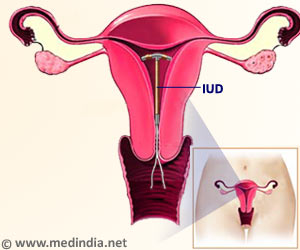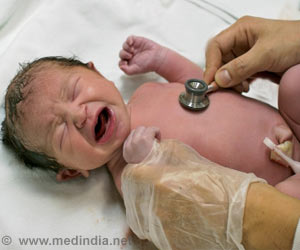Administering misoprostol at home after 12 weeks of pregnancy is safe and reduces hospital time, and most women prefer home treatment.

First dose of misoprostol administration at home or in hospital for medical abortion between 12-22 gestational weeks in Sweden (PRIMA): a multicentre, open-label, randomised controlled trial
Go to source).
A randomized controlled trial of 435 women participated and the first dose of mifepristone was administered to all patients as usual in the clinic; however, some patients also took the first dose of misoprostol at home. In the earlier research, the majority of medical abortions performed beyond 12 weeks of pregnancy take eight to twelve hours to complete and usually require two to three misoprostol doses. Some patients may also need to spend the night in the hospital.
‘Misoprostol administration can improve the chances of later-stage abortions. #abortion #pregnancy #misoprostol #medindia’





Advertisement
Reducing Hospital Time with Misoprostol Administration
“Currently, most abortions after 12 weeks of pregnancy take place in hospitals and may require an overnight stay, which some women find stressful and isolating. Our trial results show that taking the first dose of misoprostol at home decreases the average time women spend in the hospital, enabling them to leave the hospital within nine hours after admission and without an overnight stay. Offering the choice to take the first dose of misoprostol at home provides a safe and effective alternative to taking all misoprostol doses at the hospital and enables women to self-manage some of the processes, potentially leading to feelings of autonomy during a time when women can feel extremely vulnerable,” says author Dr. Johanna Rydelius, Sahlgrenska Academy, University of Gothenburg, Sweden.She adds, “Our study found 1% of the women who took misoprostol at home completed the abortion before attending hospital for the next dose. Previous studies suggest a 1% complete abortion rate within two hours after the misoprostol first dose, and women who took misoprostol at home were made aware of this risk when choosing to take part in the trial and provided with a number to call if they had any concerns. Women who are given the choice to take the first dose of misoprostol at home must be informed about the very small risk of the abortion occurring before attending the hospital.”
Advertisement
Patient Experience and Outcomes in At-Home vs. Hospital Misoprostol Administration
The study took place at six hospitals in Sweden between January 2019 and December 2022. All participants were given mifepristone oral pills at an outpatient clinic and provided with a time to return. Women between 12 to 22 weeks pregnant planning to undergo a medical abortion and who chose to take part in the trial were randomized to either receive their first dose of misoprostol at home or the hospital.Women in the home treatment group administered the first dose of misoprostol vaginally at home and returned to the hospital two hours later for the remaining treatment. Women in the hospital group self-administered the first dose of misoprostol upon arrival at the hospital. All participants then took repeated doses of misoprostol under the tongue every three hours until the abortion occurred.
Of the patients in the home treatment group, 71% (156/220) spent fewer than nine hours at the hospital, compared to 46% (99/215) of those in the hospital treatment group. There was no difference in the average pain score, types and number of side effects, or rates of admittance to the hospital earlier than planned between the two groups. Two patients in the home treatment group (1%) had the abortion on the way to the hospital, between one to two hours after taking the first dose of misoprostol.
The patients were asked to complete a follow-up survey two to four weeks after the abortion. Five out of six participants in both trial arms (171/200 of those in the home treatment group and 152/188 of those in the hospital treatment group) said they were delighted with their care. When asked ‘If you were to choose, where would you prefer to take the first dose of misoprostol?’, 78% of women in the home group and 51% of women in the hospital group said they’d prefer to take the first dose of misoprostol at home.
Challenges Associated with Misoprostol
The authors acknowledge some limitations of the study, including that the Data and Safety Monitoring Board advised the researchers to end the trial early due to a lower-than-expected enrolment and slow progress toward the trial's target of 784 participants. However, trial site feedback suggests the lower-than-expected enrolment rate was not due to reluctance to take misoprostol at home but rather due to patients feeling overwhelmed by the overall situation.“Every patient who seeks abortion care must navigate a unique set of personal and medical circumstances. The choice of self-administering the first dose of misoprostol at home may provide some patients with a sense of autonomy and comfort during what can be a very overwhelming time in their lives. In addition, providing the option of the first dose of misoprostol at home would enable more abortion clinics with no overnight facilities to provide medical abortions for women who are over 12 weeks pregnant, something particularly important for locations where access to abortion care is limited," says author Prof Kristina Gemzell Danielsson, The Karolinska Institutet, Sweden.
Writing in a linked Comment, Heidi Moseson and Caitlin Gerdts, Ibis Reproductive Health, USA, who was not involved in the study, said: "Increasing access to abortion later in pregnancy is a crucial component of the struggle for reproductive autonomy; it requires innovation, and evidence, and a willingness to listen to the needs and experiences of people having abortions. Judging from the overwhelming preference for at-home administration of misoprostol in the PRIMA Trial, moving towards a less clinically supervised model of medical abortion care later in pregnancy is an important first step.”
Reference:
- First dose of misoprostol administration at home or in hospital for medical abortion between 12–22 gestational weeks in Sweden (PRIMA): a multicentre, open-label, randomised controlled trial - (https:www.thelancet.com/journals/lancet/article/PIIS0140-6736(24)01079-1/abstract)
Source-Eurekalert














